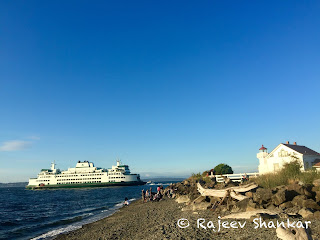While
living in Brabant, in the south of the Netherlands, in 1884, Vincent van Gogh,
wrote to his younger brother Theo, about how he perceived the seasons in
colours, and described summer as ‘the opposition of blues against an element of
orange in the golden bronze of the wheat’.
 |
| Summer Evening (June 1888) by Van Gogh |
Van Gogh
thought of summer to have a deep-seated symbolic meaning. His fascination with
summer continued even years later when he moved to Provence and, thoroughly under
the spell of the harvest of the wheat, produced several works that captured the
essence of summer days in southern France.
If spring
is the season of new beginning and regeneration, summer is the period of youth -
the time of romance, fullness, growth, and limitless potential - something well
portrayed by Mark Twain in his Huck Finn and Tom Sawyer stories (it is the
summer when Tom helps Huck, who finds his ‘civlised’ life confining, escape and
explore the world outside).
In the poem
Insect Life of Florida, Lynda Hull mulls
over how the hot summer days appear to be endless and how the rains on hot days
make her transiently forget the cruelty of love:
Afternoons, showers
drummed the roof,
My parents silent for
hours. Even then I knew
Something of love was
cruel, was distant.
 |
| Summer Evening (1947) by Edward Hopper |
While it is
scientifically not known whether the notion of ‘summer love’ is really real or
it has just become a part of our collective consciousness, at least art and
literature love hot, long summers, as evident in scores of films, songs,
paintings, novels, and poems. Even Shakespeare, the ‘Bard of Avon’, was no
stranger to the importance of summer as the season of the forcefulness of the
passions:
Shall I compare thee to a summer’s day?
Thou art more lovely and more temperate.
Cloudless
sky, sunny days, creeks and streams flowing in their fullness, roadsides
kneaded in grass, trees laden with leaf, poppies, and goldfinches, sparrows,
and robins squeaking and squawking: the fulsomeness of life is more vivid in
summer than any other season.
But if there
is flowering, sweetening, and ripening, as the summer ends, there is also putrefaction.
Autumn takes a light-footed leap, wiping out all symptoms of summer, which it now
looks like was the evanescent mist that hung over a tree on which hope and love
lived in unison.
The end of a season is like the irreversible course
of growing up.

